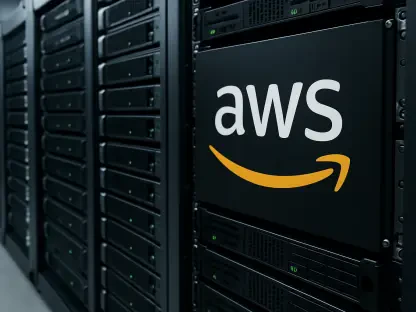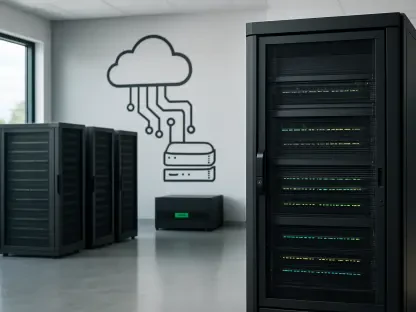The landscape of hyper-converged infrastructure (HCI) is on the brink of transformation following DataCore’s strategic acquisition of technology from StarWind. This move is not just an expansion of DataCore’s portfolio but a significant leap in enhancing its services, tailored for small and medium-sized businesses, edge locations, and remote office/branch office (ROBO) applications. DataCore’s vision, encapsulated in its ambitious DataCore.NEXT initiative, aims to redefine its role as a comprehensive provider of storage solutions. The integration of StarWind’s technology catalyzes this vision, broadening DataCore’s reach from the core to the cloud and the network’s edge.
Journey Towards a Comprehensive Storage Solution
Strategic Developments Under DataCore
DataCore’s ascent to becoming a universal storage provider traces back to pivotal strategic decisions made since Dave Zabrowski’s appointment as the CEO. The company shifted its trajectory from being a single-product entity to an expansive provider of diverse storage solutions, including block, file, object, and container storage. These strategic moves included notable acquisitions like Caringo, which brought S3 object storage into DataCore’s ecosystem, rebranded as Swarm. The purchase of MayaData was another vital step, integrating the OpenEBS container-native storage product into the mix. The subsequent acquisition of Arcastream fortified DataCore’s capabilities in file storage, integrating a parallel file system to build on its block-based and object-based storage strengths.
Each acquisition seamlessly stitched together a fabric of storage solutions that align with DataCore.NEXT’s vision, propelling the company closer to being the industry standard for comprehensive storage solutions. The purchase of StarWind represents the latest and arguably the most crucial phase of this journey, filling gaps and enhancing edge applications to round off DataCore’s robust HCI product suite.
StarWind’s Distinctive Integration
DataCore’s integration of StarWind marks a significant departure from its previous HCI configurations, traditionally facilitated by its SANsymphony product. Unlike earlier needs that involved partnerships to combine block storage with networking and hypervisors into a singular solution, StarWind introduces a self-sufficient, hypervisor-agnostic innovation. This new offering integrates seamlessly with leading systems like VMware, Microsoft Hyper-V, and KVM, encapsulating networking, computing, storage, and hypervisor functionalities within a ready-to-go appliance.
StarWind’s technology stands out for its ability to facilitate environments with limited IT resources effectively. Its design includes a fleet manager for streamlined remote management, making it particularly beneficial in industries like retail and shipping, where onsite technical expertise may be lacking. This adaptability allows StarWind’s solution to function as a data center-in-a-box, operable even in environments that may frequently disconnect from central networks, such as retail locations or cruise ships. Beyond these applications, StarWind’s utility extends into IoT in manufacturing, connecting production activities across geographically dispersed sites.
Market Implications and Operational Integration
Capturing New Opportunities
The shifting landscape in the tech industry, particularly with Broadcom’s acquisition of VMware, presents a promising horizon for DataCore. This development has opened new channels as businesses reassess their dependence on established players like VMware in search of agile, alternative solutions. DataCore aims to capitalize on these shifts by positioning StarWind as a key offering for businesses pivoting from VMware. As organizations explore hypervisor-agnostic technologies or the integration of Kubernetes containers to bypass traditional hypervisors, StarWind’s compatibility and flexibility reinforce DataCore’s appeal in the evolving market.
DataCore is effectively leveraging this momentum, aiming to enlarge its market footprint and capture customer groups seeking resilient alternatives. This strategic positioning not only promises to fill existing market voids but also enhances DataCore’s competitiveness amid industry giants. Dave Zabrowski’s foresight in identifying these market shifts cements DataCore’s opportunity to capitalize on the growing demand for adaptable, comprehensive HCI solutions.
Future of DataCore and StarWind Integration
The strategic integration of StarWind into DataCore’s framework involves a diligent approach to amalgamating resources, including the addition of StarWind’s management team and user base into DataCore’s operational structure. This integration is designed to maintain the distinct identities and strengths of both entities while collaboratively enhancing offerings through a unified management layer enriched with potential AI capabilities. Set for future release, these innovations are poised to streamline operations and offer enhanced analytics and automation in storage management.
Innovative licensing models accompany this integration, providing existing DataCore customers with flexible options to incorporate StarWind and align with broader market trends. By transitioning from traditional perpetual licenses to subscription-based models, DataCore offers its solutions through more manageable OPEX terms, mirroring the evolving paradigms of enterprise technology procurement. These steps underscore DataCore’s commitment to evolving with its customers’ needs while reinforcing its reputation as a pioneer in the HCI space.
Competitive Edge and Market Strategy
Differentiation from Competitors
StarWind’s incorporation into DataCore’s suite distinguishes the company in an increasingly competitive market by presenting a cost-effective, hypervisor-agnostic solution ideal for decentralized environments. Unlike competitors such as Nutanix, Scale, and StorMagic, StarWind’s emphasis on affordability and robust fleet management capabilities makes it particularly appealing to enterprises without extensive onsite IT infrastructure. This distinction emphasizes DataCore’s strategy to offer holistic solutions that are adaptable, economically viable, and technically advanced, addressing a broad array of industry needs.
In extending its comprehensive portfolio, DataCore not only caters to diverse storage requirements—from centralized data centers to edge computing—but also positions itself favorably against its competitors. The merger with StarWind amplifies DataCore’s ability to provide versatile, streamlined solutions across enterprise verticals, underlining its dedication to delivering efficient, high-quality storage solutions across the globe.
Concluding Insights
DataCore’s acquisition of StarWind’s technology marks a pivotal moment in the evolution of hyper-converged infrastructure (HCI). This strategic move is not merely an expansion of DataCore’s existing offerings; it represents a major advancement in delivering sophisticated solutions specifically designed for small and medium-sized enterprises, edge computing sites, and remote office/branch office (ROBO) applications. At the heart of DataCore’s strategy is the visionary DataCore.NEXT initiative, which aims to reposition the company as a leading provider of diverse storage solutions. By integrating StarWind’s innovative technology, DataCore strengthens its ability to serve a broad range of applications, bridging the gap from core technologies to cloud solutions and extending to the network’s periphery. This move underscores DataCore’s commitment to staying ahead of industry trends, ensuring that its portfolio can meet the diverse and evolving needs of modern businesses, from centralized data centers to decentralized network environments.









